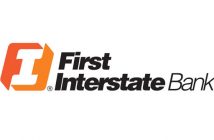Banks offer special credit products for small businesses. Before going to the bank, decide on the questions: why do you need a loan, what amount do you need, find out the conditions for providing all types of loans of interest.
Lending conditions for small business
There are several types of loans for businesses – overdraft, commodity loans, commercial loans, commercial mortgages, project and venture financing, loans to individual entrepreneurs. Let’s consider each of them separately.
- Overdraft is a loan available to individuals and legal entities for up to thirty calendar days. However, when using a plastic card, the period increases to fifty days. This type of lending is beneficial for those who need to quickly receive one or another amount to replenish their current account without providing economic and technical justifications for the loan, a formalized plan for developing their own business. Moreover, interest rates are usually low, and the limit can be changed.
- A commodity loan has the following scheme: the borrower receives the types of equipment necessary for the business. For example, office equipment or machines manufactured by special order abroad. Next pay for them. Moreover, he is given the opportunity to take advantage of unsecured business term loans and receive a delay of up to 364 (365) days.
- A commercial loan is suitable for the situation when the buyer cannot pay for the necessary product or service at the moment. That is, the seller provides him a loan in commodity form. Thus, existing enterprises can provide this service to each other. This type of lending is beneficial because it does not need to freeze production processes or reduce output. And this means that sales are not decreasing, and profits are growing. A commercial loan is valid for several months.
- A commercial mortgage is a loan that entrepreneurs take to purchase offices or warehouses, that is, premises located in a non-residential fund. Moreover, the guarantee is the same real estate. The terms are quite tight, the stakes are high. So, the bank is trying to reduce possible losses.
- Project financing requires a long time for consideration of the application and business plan (up to six months). And even after that, you can be left without a positive answer. Suitable for those cases when you need to purchase valuable equipment or objects through leasing.
- Venture financing will suit you if you plan to work in the field of scientific technology. The service is provided by investment companies and special venture funds. A loan is issued for a long period and at a high-interest rate. But without any guarantees. The risk is maximum, since investments may not pay off: research projects are not initially successful.
- Loans to individual entrepreneurs differ from loans granted to individuals. Despite the similarity of terms and rates. The fact is that an individual monthly pay the nth amount to a credit account, allocating it from a stable monthly salary. That is, the income received is not related to funds taken on credit. Such a form as an IP, in turn, expects that repayment of the loan will bring tangible benefits and increase the level of profitability of production.
The main types of loans for small businesses are:
Overdraft
Overdraft is a special loan scheme, offered to the borrower, subject to the availability of a bank account. Usually, they talk about allowed overdraft – i.e., the borrower may, in agreement with the creditor, exceed the cash limit of the funds in the account. The amount is taken in excess of the available and is an overdraft.
An unauthorized overdraft (without agreement with the bank) is punishable by penalties. Only they accrue interest on this loan. This is quite convenient – as the negative balance decreases, the fee for using the lender’s funds also decreases.
Overdraft interest rates do not exceed 10% – 20%. Sometimes there is an interest-free period (several days), payment on the loan is charged daily.
The allowed overdraft has the following varieties:
- Overdraft in advance
- Technical overdraft (credit for payments made at the expense of the borrower)
- Overdraft for collection (when most of the proceeds to the account come from the borrower), etc.
A loan is very convenient because it does not require collateral – the only personal guarantee of the borrower is enough.
The validity period of an overdraft agreement usually does not exceed a year. The time for which the overdraft is issued does not exceed three months. Therefore, when registering such a loan, you need to be ready to pay the amount required by the bank in a short time.
Lines of credit
Credit line (loan agreement) provides the borrower with a credit institution the obligation to issue loans to him (open a credit line for him) for some time in the amount of the agreed limit. Moreover, the credit line refers to both the agreement with the bank and the amount issued.
There are two types of credit lines: Credit lines with a limit on disbursements – a classic way of issuing cash loans. The borrower enters into an agreement with the bank, which stipulates a limit on the number of funds that will be provided to the borrower within a certain period.
Credit line under a debt limit (revolving or revolving credit). During the term of the contract, an unlimited number of credit tranches are provided, only their amount cannot be higher than the amount of the credit line under the contract. When repaying part of the debt, the borrower has the opportunity to take another loan within the unused limit.
Loans of this type are concluded for a period of up to two years, the terms for using credit tranches are usually from three to six months.
Interest rates are calculated individually depending on the purpose of the loan, its term, financial position of the borrower and other factors.
Whatever type of lending you choose in the credit market, first of all, correlate your opportunities with the requirements of the bank.
Conclusion
Early repayment terms are of particular importance. As a rule, the borrower is obliged to notify the lender in advance of early repayment. Any additional fees for early returns are considered illegal. The client returns exactly the amount of interest that is accrued for the actual period of use of borrowed funds. The debt burden over the past few years is growing rapidly, while the number of bankrupts among individuals is increasing. The reasons for this are poor credit discipline, job cuts, loss of solvency, etc. To avoid such problems, experts recommend increasing financial responsibility – clearly plan expenses and carefully choose loan products.





